
Royals and the Occult: Witchcraft, Astrology, and Mystical Healing
We often talk about the modern world’s obsession with celebrities. People love to talk about the rich and famous. This is nothing new. It’s been a part of human nature since time immemorial. Before we had celebrities to gossip about, we had the royal families. For hundreds of years, people have been busy drawing connections between the royals and the occult. Some of these rumors are completely false, but many have grains of truth.
There are references connecting various royals with the occult going back hundreds of years. Some royals have sought to use the occult, and others spent their lives attempting to battle the perceived forces of darkness. Below are some of the best examples of royals who were connected to the occult in some way or another. We will see that for every royal who sought to benefit from the occult, another was hurt.
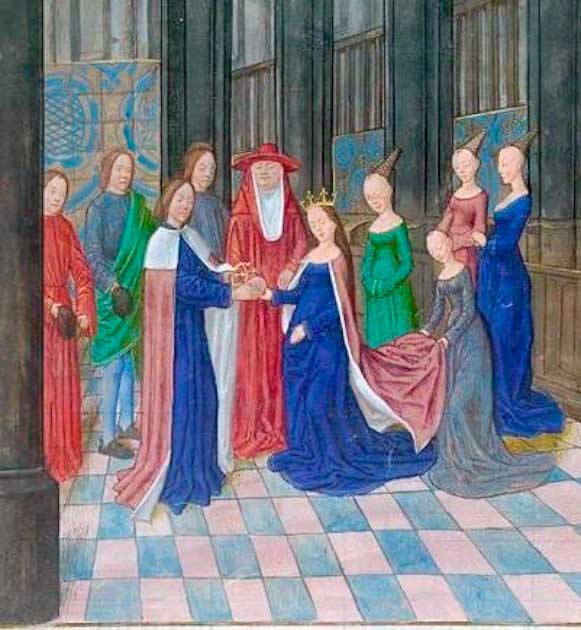
Illuminated miniature depicting the marriage of Edward IV and Elizabeth Woodville, ‘Anciennes Chroniques d’Angleterre’ by Jean de Wavrin, 15th century (Public Domain)
Elizabeth Woodville and her Mother
Poor Elizabeth Woodville didn’t have much luck in life. Things started happily enough when she married King Edward IV in 1464, but soon went downhill. In 1471, Edward was ousted from the throne and imprisoned by the Earl of Warwick, who put Henry VI on the throne in his stead.
Soon after, the Earl had Elizabeth’s father executed and accused her mother, Jacquetta, of witchcraft. At that time, any allegation of witchcraft was a serious situation. It was also an excellent way to quickly and efficiently ruin a good woman’s reputation.
Edward was soon back on the throne, but this wasn’t the end of Elizabeth's woes. Amazingly, Edward added fuel to the fire by investigating his enemy's accusations. The accusations were found to be false, but the damage was done. By choosing to investigate them at all, he had given credibility to the accusations. Elizabeth and her mother would forever be tainted in the eyes of the public.
Edward passed away in 1483, leaving Elizabeth and his son Edward V behind to fend for themselves. As Edward V was too young to rule, his uncle Richard was made regent. Suspiciously, Edward fell off of the historical map soon afterward, and the next thing we know Richard became Richard III. Not suspicious at all. As if his rise to power wasn’t questionable enough, the newly crowned Richard III soon started gunning for Elizabeth. He claimed she had used witchcraft to seduce her deceased husband.
Since she was never brought to trial, it would appear this was just a publicity stunt by Richard to distract from any of his shady dealings. Sadly, it worked. While Elizabeth ended up outliving Richard’s reign, she never recovered from all the accusations of witchcraft.
- John Dee: Scholar, Astrologer, and Occult Practitioner that Captivated the Royal Court of 16th Century England
- Magic of the Ancients: Five Incredible Texts of Spells, Curses, and Incantations
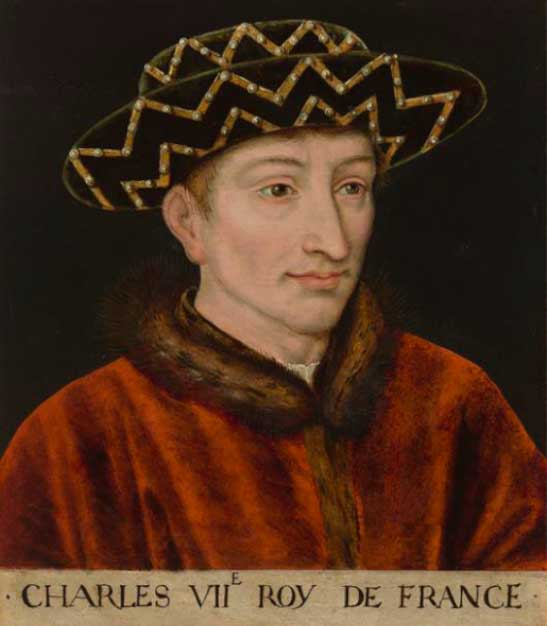
Oil portrait of Charles VII of France, circa 1600 (Public Domain)
Charles VII of France - A Scholar of the Occult
Charles VII of France is a good example of how being rich and powerful (and male) can make you impervious to the law. You see, in a time when an interest in the occult could get you burnt at the stake, Charles VII was busy learning all he could about the occult.
Charles was fascinated by the occult, and he had the power, funds, and education to feed his habit. By the middle of the 14th century, he had a whole library devoted to astrology. Of course, today astrology is seen as harmless, but at the time it was seen as a dangerous mixture of science and witchcraft. Neither science nor witchcraft was particularly popular with the church.
Charles would go on to establish a college of astrology in Paris which did much to legitimize his hobby. Although an interest in astrology doesn’t seem like much of a big deal today, we have to ask ourselves if a peasant with the same interests would have been so lucky.
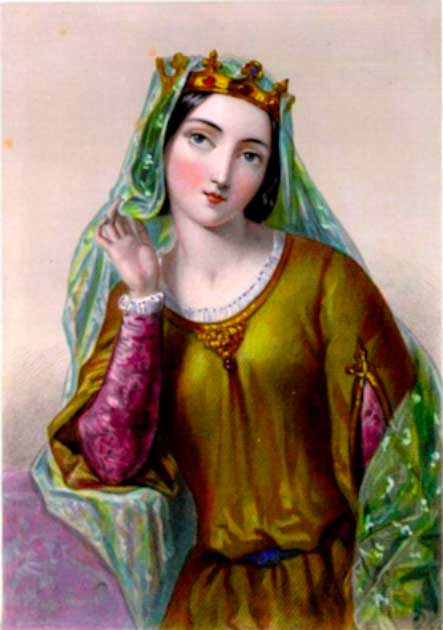
Isabella of Angoulême, queen of England (Public Domain)
Isabella of Angouleme - A Bewitching Presence
It is often said that behind every good man is a good woman pulling the strings. So what’s behind a bad man? Well, according to 13th century Englishmen, it was probably a witch.
Isabella was the wife of King John of England, who is perhaps one of the most hated British monarchs. He is often portrayed as a villain who was so busy scheming he ended up losing most of his power. His incompetence has become legendary, and obviously, it was all Isabella’s fault.
John married Isabella at the tender age of 12. He had just secured the throne, and she was from a powerful French family. It is likely his and Isabella’s was predominantly a political wedding, as was common for royals of this period.
It probably didn’t help that Isabella was said to be beautiful and charismatic. Unfortunately for her, this would soon lead to rumors about witchcraft. Surely no one could be so naturally beautiful? It was clear she had used the dark arts to bewitch poor King John.
The rumors continued even after John’s death. In the 1240s, she was accused of attempting to poison Louis IX of France. She was never arrested or put on trial, but Isabella had enough sense to flee. She spent her remaining years living in an abbey - the last place you’d look for a royal witch.
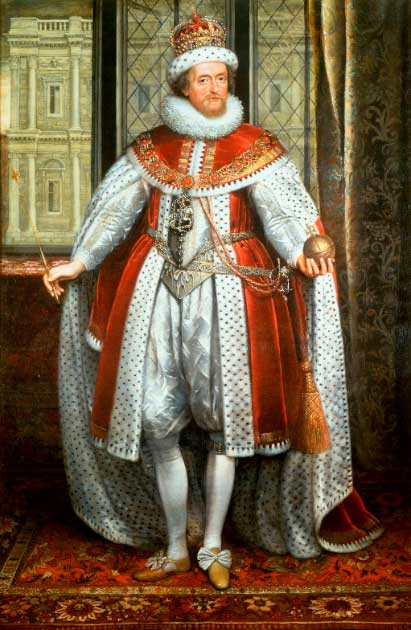
James VI & I, circa 1620 (Public Domain)
James VI - The (Rightly?) Paranoid King
It is not uncommon for those who wield great power to become paranoid. After all, when you sit at the top, there is always someone looking to knock you down. Normally, a king would be paranoid of assassination attempts and coups, but for James VI of Scotland, it was witches. James was about as obsessed with witches as a person could be.
To be fair to James, during the 16th and 17th centuries, all of Europe was obsessed with witches. Scotland, his homeland, was especially concerned with witches. During this period, the Scots were killing suspected witches at a rate five times higher than the rest of Europe.
So James was a product of his time, but he took it to the next level. It would seem that perhaps the witches were equally interested in him. In 1591, Agnes Sampson (an accused witch) confessed that she and hundreds of other witches had been plotting to kill James.
Perhaps she was telling the truth. Or perhaps the confession was coerced. Or perhaps Agnes knew she would probably die and just decided to mess with the paranoid king as a form of revenge.
Whatever the reason, her confession fueled James’ obsession. He would later go on to write his “Daemonologie”, a book all about how witchcraft and the occult were an ever-present threat to Christians.

Queen Anne Boleyn (National Trust / Public Domain)
Anne Boleyn - The Headless Witch
King Henry VIII has a rightly deserved reputation for burning through wives. He married six wives and executed two of them. Anne Boleyn was one of those unlucky two.
When Henry was ready for a new wife, he didn’t always have a good reason for dumping his current wife. In Anne’s case, the official charges were adultery, incest, and treason. These are the charges that put her head on the chopping block.
Before these allegations came Henry’s first attempt at getting rid of her, which wasn’t quite as successful. He initially accused her of witchcraft, claiming she had bewitched him into marriage. The evidence? It was rumored that she had a sixth finger and suspicious moles (tell-tale traits of being an enchantress). Not terribly compelling.
However, it was also said that her stillborn son had been born deformed. Lacking the science to explain such things, this was taken as evidence that the poor mother had had dealings with the devil. In those superstitious times, it was not uncommon to blame the mother for such tragedies.
Unfortunately for Henry, England didn’t have any legislation under which an accused witch could be tried. However, like so many royal women before her, the damage to her reputation was done. It’s much easier to believe someone guilty of treason, incest, and adultery when you already believe they’re a witch.
- The Ancient Art of Magic, Curses and Supernatural Spells
- Picatrix: The Ancient Arabian Book of Astrology and Occult Magic

John Dee performing an experiment before Queen Elizabeth I, oil painting by Henry Gillard Glindoni. (Welcome Collection / CC BY-NC 4.0)
Elizabeth I and John Dee- The Occult Courtier
No discussion of royals and the occult can really go ahead without mentioning John Dee. Dr. John Dee was an incredibly interesting man. He was a skilled astrologist, alchemist, scientist, and occultist, a true polymath and genuine genius. He had worked for Elizabeth’s sister, Mary I, and was soon introduced to Elizabeth I.
Dee fascinated Elizabeth, and he soon became a central pillar of her court. When Elizabeth had a question, it was Dee she went to, whether it be dream interpretation or a challenging puzzle.
Dee was not just a scientist, however. He held séances and attempted to speak to divine spirits like angels. He had a large collection of mystical artifacts such as a 'spirit mirror” and magic figurines.
Whether Elizabeth approved of Dee’s occult leanings or just chose to turn a blind eye is largely unknown. But it is known that on the day she died, Elizabeth chose to visit Dee one last time and demanded to view his magic mirror. Unfortunately, no one could seem to get it working.

Rasputin’s piercing eyes (Public Domain)
Nicholas II and the Infamous Rasputin
Anyone with even a passing interest in the occult has probably heard of Nicholas II of Russia and his right-hand man, Rasputin. When it comes to Rasputin, it can be hard to separate fact from fiction.
However, the Romanov family's interest in the occult predated Rasputin. Like most royals, all Nicholas wanted was a healthy royal heir to continue his dynasty. Unfortunately, this was something Nicholas and his wife Alexandra struggled to do.
Over the years, they turned to a series of increasingly peculiar mystics who all claimed to be able to help them. There was Mantronuskha the Barefooted, a seemingly crazy peasant woman who won the couple's favor by occasionally making vague predictions of a healthy son for the royals.
Then there was Demchinsky, the meteorologist who claimed to predict the future and the weather. Finally, there were upper-class mystics like Rasputin. These men and women were mystics who claimed to be orthodox Christians, just with mystical powers which made things more palatable.
For all his fame, Rasputin is still somewhat of an enigma. Eccentric con artist or genuine mystical healer? No one at the time or since seems to know.
Rasputin was brought in to treat Alexei, the son of Alexandra and Nicholas. He was a sickly child who suffered greatly from hemophilia. No treatment had worked until Rasputin came along.
His “magic” appeared to work, and to this day no one seems to know how he did it. The boy's tutor, Pierre Gilliard described him as a “clever cheat”, while others, especially Alexandra, were convinced Rasputin had holy powers. We only know that every time Rasputin claimed to help Alexei with his hemophilia, the boy mysteriously improved.
Rasputin became invaluable to the Romanov family and became a fixture of the court. This would prove to be his undoing. Rasputin had once been a favorite of Russian aristocrats, but as he became increasingly power-hungry, he became increasingly unpopular.
He was soon hated by almost all of Russia, doing massive damage to the royal family’s reputation. This led to his eventual assassination at the hands of several nobles. But even his death was mysterious. It was rumored that Rasputin was almost supernaturally difficult to take down. It supposedly took a lot of poison, several bullets, and a drowning to take him out.
Whether a true mystic or a con-man, the damage Rasputin did to the Tsar is undeniable. His decadent lifestyle and political meddling painted a bullseye on the Royal family's back. Not long after Rasputin’s death, the Romanov families followed.
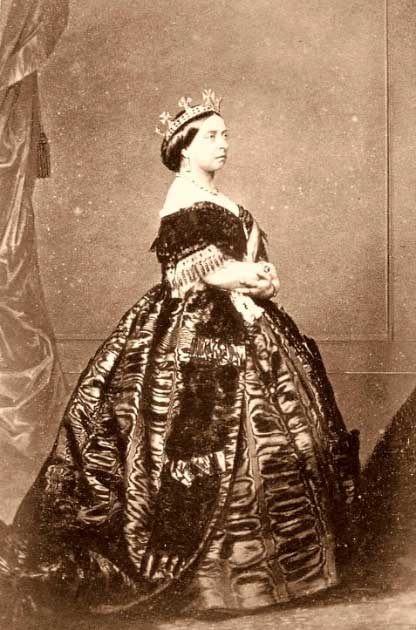
Queen Victoria wore all black for over forty years mourning Prince Albert, and would never stop trying to contact him in the afterlife (Public Domain)
Queen Victoria - A Royal in Mourning
Queen Victoria has a reputation for being straight-laced and no-nonsense. Less publicized is her belief in spiritualism, especially after the loss of her beloved Prince Albert.
Prince Albert passed away in 1861, leaving Elizabeth distraught. She would mourn for the rest of her life, never truly moving on. Unable to accept his death, she turned to various mediums to help her contact her dead husband.
Not long after Albert’s death, a medium called Robert James Lee claimed to have been visited by Albert during a séance. Why Albert would choose to visit a 12-year-old is anyone's guess, but it was good enough for Victoria. She hired the young medium and held multiple séances with Robert.
The young medium reportedly had some success coming up with information that supposedly no one but Albert would know. People deal with grief in different ways. If Robert was helping Victoria deal with hers, then surely it was harmless?
Troublingly, the story takes a rather darker turn. It would seem these séances became a crutch for Victoria. She soon began asking her dead husband for advice on political matters. It is not hard to see how this might be open to abuse.

Royal families have dabbled in the occult and alchemy for ages (vgorbash / Adobe Stock)
Conclusion
In the end, the relationship between royals and the occult is a messy one. Some royals have attempted to use the occult for personal gain others have battled against it.
Although it might be fun to imagine kings and queens sitting around a pentagram, making deals with the devil, the truth is much more mundane and frightening. More often than not the occult has been used as a weapon of political intrigue.
Talk of the occult has been used to delegitimize predecessors, take out political rivals, and bend rulers to men like Rasputin’s will. More royals have met their downfall thanks to an association with the occult than have ever prospered.
Top image: A female, crowned, royal occult practitioner with a magical raven. Source: Petro / Adobe Stock
References
Crocker. S. 2022. Royalty who Dabbled in Witchcraft. Grunge. Available at:
https://www.grunge.com/417990/royalty-who-dabbled-in-witchcraft/
Meares. H. 2022. Royals and the Spirit World. Vanity Fair. Available at:
https://www.vanityfair.com/style/2022/07/royals-and-the-spirit-world
Soaft. L. 2022. Anne Boleyn: Pushed to the Edge or Devious Witch? The Collector. Available at:
https://www.thecollector.com/anne-boleyn-tudor-queen-of-england/
Starbuck. L. 2019. Queens and Witchcraft: Isabella of Angouleme. RoyalCentral. Available at:
https://royalcentral.co.uk/features/queens-and-witchcraft-isabella-of-angouleme-55244/
Wilkes. J. 2020. Rasputin: The Mad Monk who became a Friend to the Romanovs. BBC. Available at:
















Comments
These days, accusing people of witchcraft in order to destroy them is old-fashioned, to say the least.
Those in power are often witches or warlocks themselves in the Church of Satan. Therefore, the modern method is to denigrate those that pose a threat as conspiracy theorists, particularly the sort who say that witchcraft is both real and dangerous, which they are, but not in any magical sense.
Conspiracy theories are not necessarily true, of course. False ones are easily spread by those of little discernment However, far greater sources of original, but false, conspiracy theories reside in more than a few major intelligence agencies. The reason is simple. The best place to hide the truth of many conspiracy theories is amongst a whole heap of ridiculous ones. Thus, the truth becomes deemed to be false by mere association.
This is the sort of manipulation that is far beyond the understanding of the average person, whether tertiary educated or not. Thus, an understanding of the role of child sacrifice in Occult ritual to modern government is beyond even the wildest imaginings of many including, most probably, the author of this article.
This is partly the new goal of education. I, personally, never graduated from secondary school. This is not a surprising outcome, for schools and, increasingly, universities teach for the middle. Both the truly brilliant and the forever behind are often marginalised. There is a reason for this. Those roughly in the middle, even those of significantly above average intelligence by some accepted definitions, are the most susceptible to brainwashing. It is from these ranks that many junior Government ministers are drawn, irrespective of political persuasion.
History, archaeology and anthropology are academic disciplines which should encourage independent thought. However, if one was to truly learn from history, one might conceivably look around at the World and realise that too little has truly changed from Medieval times in how we are governed. That may lead to too many important questions being asked.
The Occult elites who wish us to accept full Feudalism are not in favour of such questioning. Far better, from their point of view, that historical questions should skirt round important topics rather than make any real connections of relevance to today's World. The Occultist new World of tomorrow and its totalitarian order depend upon it.